
Filter News
Area of Research
- (-) Energy Frontier Research Centers (1)
- (-) Energy Science (115)
- (-) Nuclear Science and Technology (39)
- (-) Supercomputing (79)
- Advanced Manufacturing (2)
- Biology and Environment (61)
- Biology and Soft Matter (1)
- Building Technologies (3)
- Computational Biology (1)
- Computational Engineering (2)
- Computer Science (4)
- Electricity and Smart Grid (3)
- Fuel Cycle Science and Technology (1)
- Functional Materials for Energy (1)
- Fusion and Fission (29)
- Fusion Energy (13)
- Isotope Development and Production (1)
- Isotopes (4)
- Materials (97)
- Materials for Computing (8)
- Mathematics (1)
- National Security (22)
- Neutron Science (29)
- Nuclear Systems Modeling, Simulation and Validation (2)
- Quantum information Science (2)
- Sensors and Controls (1)
News Topics
- (-) Advanced Reactors (16)
- (-) Buildings (39)
- (-) Grid (41)
- (-) Nanotechnology (16)
- (-) Nuclear Energy (44)
- (-) Partnerships (12)
- (-) Physics (10)
- (-) Summit (44)
- 3-D Printing/Advanced Manufacturing (83)
- Artificial Intelligence (42)
- Big Data (27)
- Bioenergy (29)
- Biology (19)
- Biomedical (24)
- Biotechnology (6)
- Chemical Sciences (16)
- Clean Water (8)
- Composites (17)
- Computer Science (109)
- Coronavirus (25)
- Critical Materials (12)
- Cybersecurity (15)
- Energy Storage (74)
- Environment (69)
- Exascale Computing (27)
- Fossil Energy (2)
- Frontier (32)
- Fusion (10)
- High-Performance Computing (44)
- Hydropower (3)
- Isotopes (7)
- Machine Learning (20)
- Materials (45)
- Materials Science (43)
- Mathematics (4)
- Mercury (3)
- Microelectronics (1)
- Microscopy (14)
- Molten Salt (5)
- National Security (11)
- Neutron Science (23)
- Polymers (13)
- Quantum Computing (20)
- Quantum Science (26)
- Security (10)
- Simulation (18)
- Software (1)
- Space Exploration (10)
- Statistics (1)
- Transportation (70)
Media Contacts

Inspired by one of the mysteries of human perception, an ORNL researcher invented a new way to hide sensitive electric grid information from cyberattack: within a constantly changing color palette.
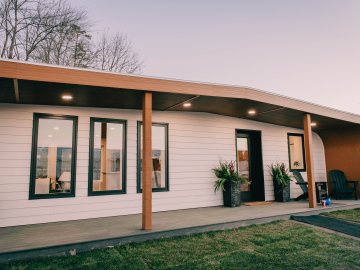
On the grounds of the University of Maine’s Advanced Structures and Composites Center sits the nation’s first additively manufactured home made entirely from biobased materials - BioHome3D.

A trio of new and improved cosmological simulation codes was unveiled in a series of presentations at the annual April Meeting of the American Physical Society in Minneapolis.

A team of researchers from ORNL was recognized by the National Cancer Institute in March for their unique contributions in the fight against cancer.
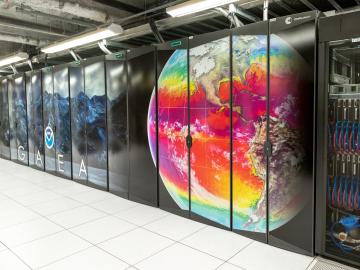
Oak Ridge National Laboratory, in partnership with the National Oceanic and Atmospheric Administration, is launching a new supercomputer dedicated to climate science research. The new system is the fifth supercomputer to be installed and run by the National Climate-Computing Research Center at ORNL.
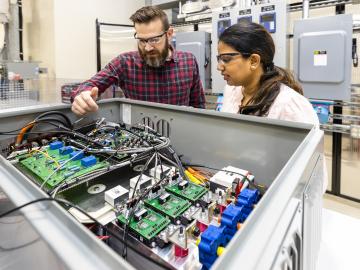
Researchers at ORNL are helping modernize power management and enhance reliability in an increasingly complex electric grid.

A new report published by ORNL assessed how advanced manufacturing and materials, such as 3D printing and novel component coatings, could offer solutions to modernize the existing fleet and design new approaches to hydropower.

Scientists at ORNL developed a competitive, eco-friendly alternative made without harmful blowing agents.
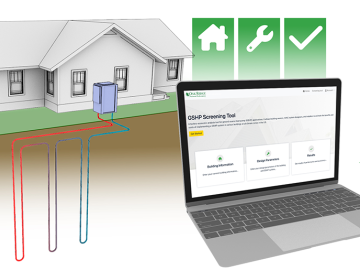
A tool developed by ORNL researchers gives building owners and equipment manufacturers and installers an easy way to calculate the cost savings of a heating and cooling system that utilizes geothermal energy and emits no carbon.
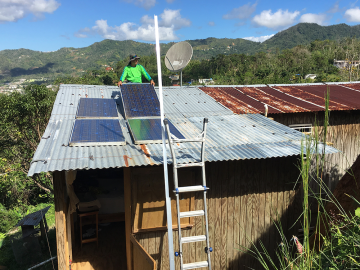
ORNL researchers Ben Ollis and Max Ferrari will be in Adjuntas to join the March 18 festivities but also to hammer out more technical details of their contribution to the project: making the microgrids even more reliable.


